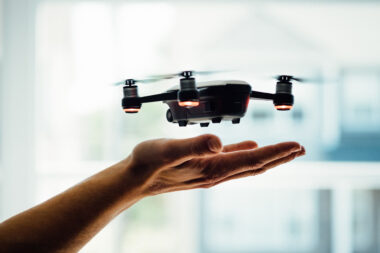Robot vision, also known as computer vision in the context of robotics, refers to the ability of a robot to interpret and understand the visual information from its surroundings. It involves the use of cameras and image processing algorithms to enable a robot to perceive and make decisions based on visual data. This capability is crucial for many robotic applications, as it allows robots to interact with and navigate through their environment, recognize objects, and perform tasks that require visual information.
Here are key components and concepts related to robot vision in robotics:
1. Sensors and Cameras:
Cameras: Robots use cameras as sensors to capture visual information from their surroundings. These cameras can vary in types, including RGB cameras for color vision, depth cameras for capturing 3D information, and infrared cameras for night vision or seeing through certain materials.
2. Image Processing:
Once visual data is captured by cameras, image processing algorithms are used to extract meaningful information. This involves tasks such as edge detection, object recognition, segmentation, and feature extraction.
3. Object Recognition:
One of the primary goals of robot vision is to enable robots to recognize and identify objects in their environment. Object recognition involves teaching the robot to differentiate between different types of objects, understand their shapes, and associate them with specific tasks or actions.
4. Depth Perception:
Some robots use depth sensors, such as time-of-flight or stereo vision cameras, to perceive the distance between the robot and objects in its surroundings. This information is crucial for tasks like navigation and manipulation.
5. Motion Detection:
Robot vision can also be used to detect and track motion. This is useful for tracking moving objects, avoiding obstacles, and understanding the dynamics of the environment.
6. 3D Mapping:
By combining information from multiple cameras or depth sensors, robots can create 3D maps of their environment. This is valuable for navigation and spatial understanding.
7. Machine Learning:
Machine learning techniques, such as deep learning, are often employed in robot vision to improve the system’s ability to recognize and understand visual patterns. Convolutional Neural Networks (CNNs) are commonly used for image recognition tasks.
8. Visual SLAM (Simultaneous Localization and Mapping):
Visual SLAM is a technique used in robotics to create maps of an environment while simultaneously tracking the robot’s location within that environment using visual data. It’s particularly important for autonomous navigation.
9. Human-Robot Interaction:
Robot vision is crucial for robots to interact with humans in a meaningful way. It enables robots to recognize and respond to human gestures, facial expressions, and other visual cues.
In the dynamic landscape of modern manufacturing, the integration of advanced robot vision has become a driving force behind transformative changes. From harnessing the potential of deep learning and neural networks to the intricacies of 3D vision and depth sensing, the realm of robot vision is witnessing a paradigm shift. Robots are no longer mere tools; they are sophisticated collaborators equipped with the ability to navigate and interact seamlessly in complex environments.
Here are some trends and techniques related to robot vision in manufacturing:
1. Deep Learning and Neural Networks:
Deep learning is a subset of machine learning that uses artificial neural networks to model and solve complex problems. In robot vision for manufacturing, deep learning techniques, particularly convolutional neural networks (CNNs), are employed for tasks like object recognition, classification, and segmentation. CNNs are well-suited for image-related tasks and have shown remarkable success in improving the accuracy of visual recognition systems.
2. 3D Vision and Depth Sensing:
3D vision involves capturing three-dimensional information about the environment. Time-of-flight cameras and structured light sensors are examples of technologies that enable robots to perceive depth. In manufacturing, 3D vision enhances the robot’s ability to recognize and manipulate objects with depth, improving tasks such as bin picking, assembly, and quality inspection.
3. Simultaneous Localization and Mapping (SLAM):
SLAM is a technique used by robots to create a map of their environment while simultaneously determining their own position within that environment. In manufacturing, visual SLAM is employed to help robots navigate through dynamic spaces accurately. This is essential for tasks like material handling and autonomous robot movement on the factory floor.
4. Robotic Bin Picking:
Bin picking involves a robot selecting and picking up objects from a bin or container. Robot vision plays a crucial role in identifying and localizing objects within the bin, allowing the robot to plan and execute precise picking movements. Advanced algorithms are used for robust object recognition and manipulation planning.
5. Edge Computing and Onboard Processing:
Edge computing involves performing data processing closer to the data source, reducing the need to send large amounts of data to a centralized server. In robot vision, edge computing is employed to process visual data onboard the robot, enabling real-time decision-making. This reduces latency and is particularly important for applications where quick responses are required.
6. Human-Robot Collaboration (HRC):
HRC refers to the safe and efficient interaction between humans and robots in shared workspaces. In manufacturing, advanced vision systems enable robots to detect the presence and movements of human workers, allowing for safer collaboration. Vision sensors help the robot adapt its behavior in real-time to ensure human safety.
7. Augmented Reality (AR) and Projection Mapping:
AR technologies overlay digital information onto the physical world. In manufacturing, AR and projection mapping are used in conjunction with robot vision to provide visual guidance to robots during assembly tasks. Instructions, annotations, or virtual models can be projected onto the work surface, aiding the robot in performing tasks accurately.
8. Quality Inspection and Defect Detection:
Robot vision systems are employed for quality control in manufacturing processes. High-resolution cameras capture detailed images of products, and advanced image processing algorithms analyze these images for defects or deviations from quality standards. This ensures that only products meeting quality criteria are released.
9. Collaborative Robots (Cobots):
Collaborative robots, or cobots, are designed to work alongside humans. In manufacturing, cobots equipped with advanced vision systems can adapt to changes in their environment, collaborate with human workers, and perform tasks that require a combination of human-like dexterity and robot precision.
10. Explainable AI (XAI):
As artificial intelligence (AI) systems become more complex, there is a growing interest in making their decision-making processes more interpretable and transparent. Explainable AI techniques aim to provide insights into how AI systems arrive at specific decisions, making robot vision systems more understandable and trustworthy for users and operators.
In the realm of robotics, the evolution of robot vision, also known as computer vision, has emerged as a transformative force. By harnessing the power of cameras and sophisticated image processing algorithms, robots can now interpret visual information, paving the way for a multitude of applications. From sensors and cameras capturing intricate details to the integration of deep learning and neural networks revolutionizing object recognition, the landscape of robot vision is rapidly evolving. In manufacturing, the synergy of 3D vision, simultaneous localization and mapping (SLAM), and collaborative robots equipped with advanced vision systems is shaping a new era of efficiency and safety. The trends outlined, including explainable AI and edge computing, underscore the ongoing commitment to making robots not just autonomous but also transparent and responsive collaborators in shared workspaces. As we navigate this frontier, the fusion of these key components and concepts propels the field forward, promising a future where robots seamlessly navigate, interact, and contribute to the intricacies of manufacturing processes.



